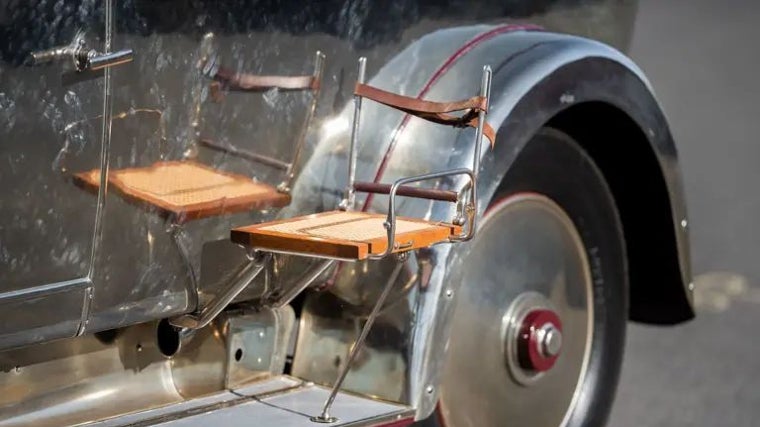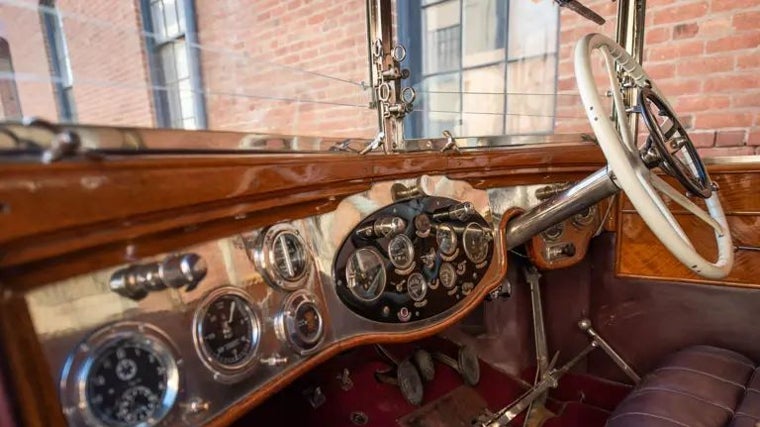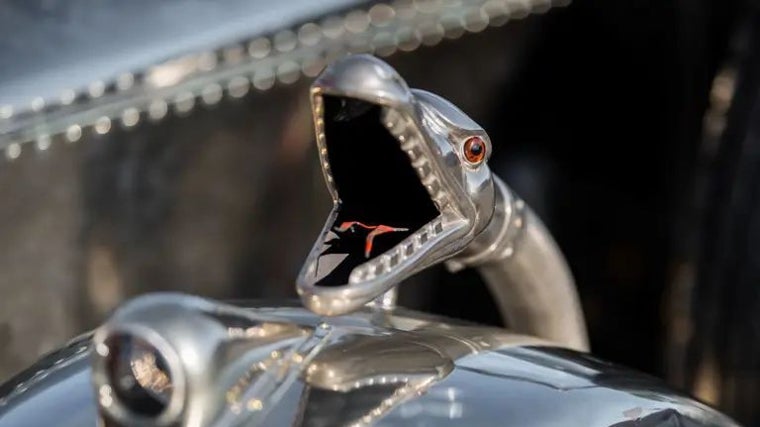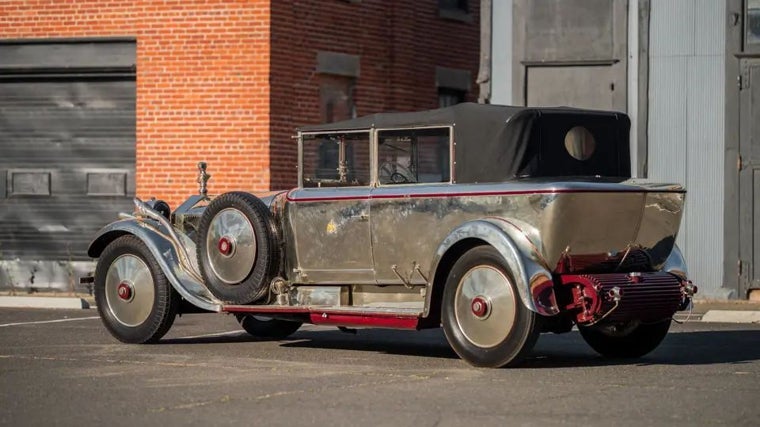Gulab Singh Deo Bahadur and other Maharajás’s ancestors traveled in spectacular carriages dragged by elephants or hunted mounted on them. But at the end of the 19th century the car arrived, and crazy was triggered among the rajás, Maharajás, Nawabs …, which gave rise to a passionate love story for the “carriages without horses” and, above all, with the Rolls-Royce brand.
This passion for the “RR” began with the Maharajá of Gwalior, Madhavrao Sindhia II, when he acquired the Rolls-Royce nickname Coronation of 1911, in Delhi, when King Jorge V was proclaimed King-Employer of India.
A Gulab Singh Deo Bahadur, admirer of technological advances (installed electricity in his state) also seduced the new invention of the car. This was the holder of several Hispanic-Suiza and Rolls-Royce, among others. And, precisely, it would be the British brand that he addressed to make the commission of building a Phantom … in silver!
But those responsible for the Manchester firm considered the project of bad taste, improper for “The Best Car in the World”, and did not accept the commission. A Maharajá is a Maharajá, but Rolls is Rolls, they had to think …
Barker & Company, from London, received the commission of the Maharajá from the Daimler chassis, according to its guidelines, according to its guidelines
SG
In any case, Gulab Singh Deo Bahadur did not give up and went to the other great British luxury car firm “By Appaint to His Majesty” that is, “Suppliers of the Royal House”, of which he was also a client: Daimler. And acquired by 1,400 pounds sterling of the time a chassis (other sources speak of three) of the 45 hp model with six -cylinder 10 -liter motor model that gave 200 hp to 2000 rpm. And he handed it to the company Barker & Company, in London, to be float.
Silver sheets
The convertible body of the Daimler, “Saloon-Cabriolet” to be precise, was carried out, according to the commission, in German silver sheets on an intricate wood interior frame, with the hood in silver leather, and a single door on the passenger side.
The design incorporated a hood that disappeared under a canvas, as well as two games of independent windows, which ran parallel to each other. One was transparent glass, to use with Maharajá on board. The second was dark smoked glass, the so -called “Purdah” glass, by the time the two wives of the Maharajá were traveling …, and they had to be hidden from the looks of her husband’s subjects. There is also a retractable crystal in dark blue, between the “Chauffur” compartment and that of the rear passengers.

Used for tiger hunting, the seats in the stirrups were used by maharajá attendees
SG
Ratán seats were installed in the stirrups for the transport of attendees and arms carriers, while the front fenders carried “constrictor boa” horn and on the front four huge lucas headlights to illuminate the night in the Indian jungle
The lantern Toby pilots occupied the rear, and the Maharajá shield announced their presence to all who contemplated the spectacular car.
Inside
Inside, two armchair -type front seats were located, and a spacious rear seat for the owner. Carpentry and fine leather works were elaborated throughout the vehicle, but it is clear, that the Maharajá was more concerned about the exterior, what was seen.

The interior was quite sober, except the dashboard
SG
Of course, and perhaps to compensate, the instrument board was not only equipped with a speedometer and a tachometer, but also with indicators to measure the outer temperature, water and oil, the pressure in each of the cylinders, a radamax spark plugs, a slope meter to measure the angle of the daimler on the ground, another for the altitude … it is not strange that someone of airships ».
Once finished, the Daimler appeared in 1926, in the magazines “Autocar” and “The Motor”, and in a drawing in the June 1927 edition of the magazine “Vanity Fair”, entitled “The Car of An Indian Potntate” (“The car of an Indian potenty”).

The spectacular horn …
SG
A photograph of the car taken by James Burke for Life, when it was owned by Maharajá, shows it with an assistant and points out that it was “used by the Maharajá of Rewa for the hunting of the tiger.”
Goodbye to Maharajá
Gulab Singh ruled Rewa until 1946, when he was deposed, wrapped in accusations of murder and corruption
His Daimler did not follow him into exile, but remained in the area first used by one of Maharajá’s children, and later in religious acts.
From the photographs of the 60s it follows that the car always remained in quite good condition, as a supposedly taken for National Geographic, which shows the car in India with all its current accessories, except the imposing radiator lid and with tinted glass in the two upper headlights.

With the hood on and the dark glass, he hid the two wives of the Maharajá
SG
A legend tells that he was hidden in the jungle and that he was recovered in a giant sling sustained by four elephants, a wonderful but apocryphal story. But what is true is that, in 1967, he was sold to the Baron of Mont-Falcon, who kept him until his last months of life.
It is then that American collector, Tom Barry. Then you can contemplate in the Blackhawk collection, in California, and in 2022 it is auctioned by Sotheby’s.
#Daimler #Star #India #commission #Maharajá #accept #Rolls

